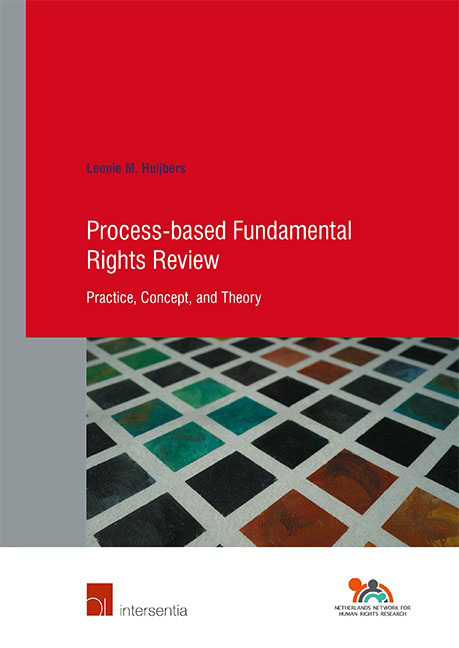Book contents
- Frontmatter
- Acknowledgments
- Contents
- List of Abbreviations
- INTRODUCTION
- PART I THE PRACTICE OF PROCESS-BASED FUNDAMENTAL RIGHTS REVIEW
- PART II THE CONCEPT OF PROCESS-BASED FUNDAMENTAL RIGHTS REVIEW
- PART III THE THEORY ON PROCESS-BASED FUNDAMENTAL RIGHTS REVIEW
- CONCLUSION
- Addendum: Questions for ECtHR Judges
- Summary
- Samenvatting
- Bibliography
- Official Documents
- Case-Law (by Jurisdiction)
- Case-Law (by Name)
- Curriculum vitae
- Human Rights Research Series
- Index
Introduction to Part I
Published online by Cambridge University Press: 11 November 2021
- Frontmatter
- Acknowledgments
- Contents
- List of Abbreviations
- INTRODUCTION
- PART I THE PRACTICE OF PROCESS-BASED FUNDAMENTAL RIGHTS REVIEW
- PART II THE CONCEPT OF PROCESS-BASED FUNDAMENTAL RIGHTS REVIEW
- PART III THE THEORY ON PROCESS-BASED FUNDAMENTAL RIGHTS REVIEW
- CONCLUSION
- Addendum: Questions for ECtHR Judges
- Summary
- Samenvatting
- Bibliography
- Official Documents
- Case-Law (by Jurisdiction)
- Case-Law (by Name)
- Curriculum vitae
- Human Rights Research Series
- Index
Summary
PROCESS-BASED REVIEW IN THE PRACTICE OF FUNDAMENTAL RIGHTS ADJUDICATION
Chapter 1 discussed the procedural trend that has been noted in the European Court of Human Rights’ case-law. The ECtHR is said to have taken a procedural turn by focusing more and more on the quality, diligence and fairness of national decision-making procedures for determining whether a substantive right has been violated. This development has been a topic of scholarly and judicial debate in recent years. At the same time, the ECtHR is not the only judicial institution that has relied on procedural reasoning with the literature showing that process-based review is applied by different courts. In relation to the EU, for example, the use of procedural reasoning by the Court of Justice of the European Union in case-law relating to the EU internal market and fundamental rights has been noted. Various examples have been provided of procedural reasoning employed in the UN Treaty Bodies’ complaint mechanisms. At the national level too, process-based review has been discussed in light of specific procedural examples. Cases entailing review of the legislative process can be found in the case-law of the South African Constitutional Court as well as the Colombian Constitutional Court.
So it seems that process-based review is part and parcel of fundamental rights adjudication. Especially in relation to procedural rights, such as the right to a fair trial and the right to an effective remedy, a procedural approach comes naturally to courts. After all, only by examining the decision-making procedures can they determine if these rights are upheld. In the context of judicial review of administrative decisions, which may affect fundamental rights, procedural reasoning is also often used. A procedural approach is considered to reflect the separation of powers between the judicial and administrative branches but also to indicate respect for the general expertise of administrative authorities for taking substantive decisions. Finally, even when process-based review is not a standardised approach, and is in fact highly controversial, it is possible to discern fundamental rights cases in which procedural reasoning has been applied by different courts. The famous footnote four of the US Supreme Court's former Justice Stone in Carolene Products – discussed in Section 1.1 – already hints in that direction.
- Type
- Chapter
- Information
- Process-based Fundamental Rights ReviewPractice, Concept, and Theory, pp. 21 - 26Publisher: IntersentiaPrint publication year: 2021



